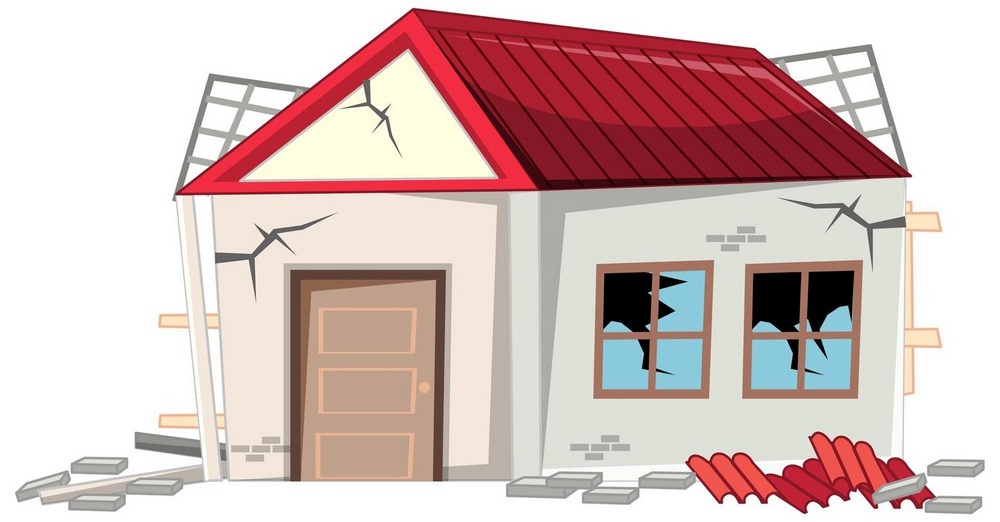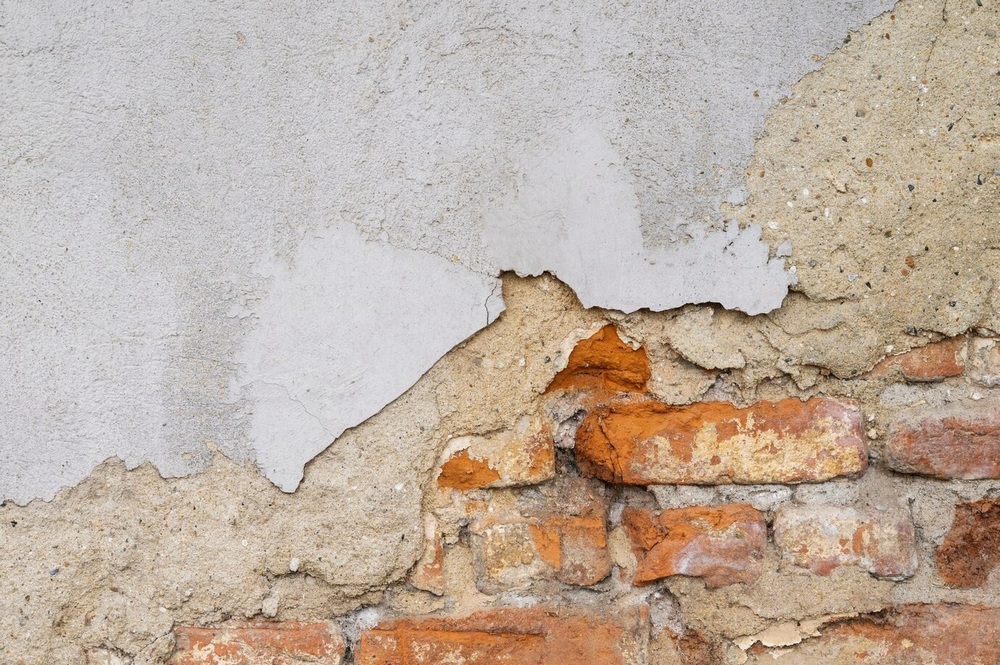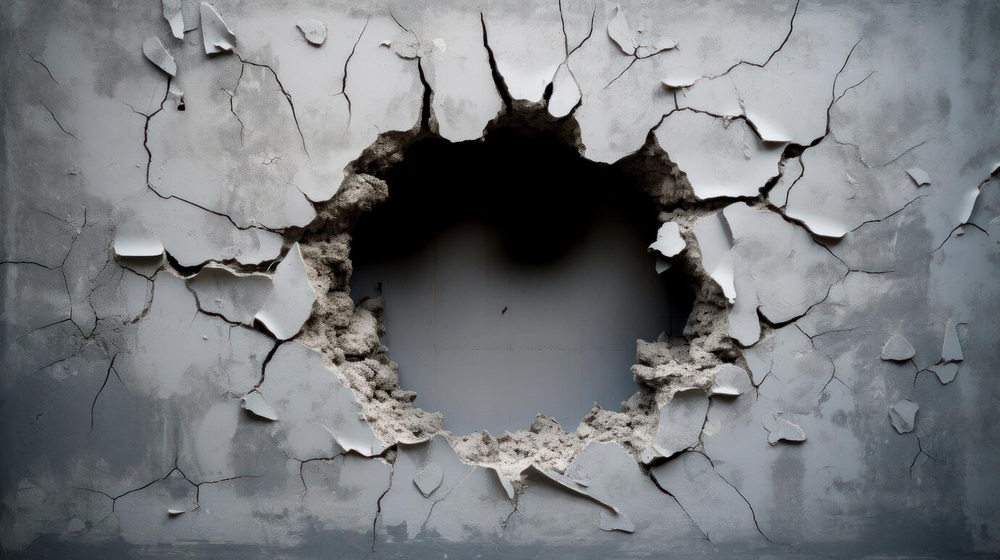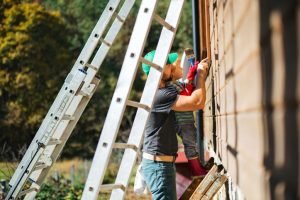Last Updated on August 19, 2025 by teamobn
For a homeowner, few things can be as stressful or anxiety-inducing as discovering a problem with their building’s foundation.
Given that the foundation is literally what keeps your house standing, any faults here could put the entire structural integrity at risk, requiring immediate intervention. The good news is that these kinds of problems don’t creep up on you, and there are early warning signs.
Recognize these signs early, and you can avoid long and costly repairs, alongside the sleepless nights that come with them. In this article, we help you uncover these signs, along with ways of better investigating them, and taking the right approach to rectifying issues with your house’s foundation.
Contents
- 0.1 Cracks In The Walls
- 0.2 Uneven or Sagging Floors
- 0.3 Sticking Doors & Windows
- 0.4 Cracks In The Foundation Itself
- 0.5 Gaps Around Exterior Doors & Windows
- 0.6 Water In The Basement or Crawl Space
- 0.7 Nail Pops
- 0.8 Bowing Walls
- 1 The Role of Soil: What’s Beneath Your Home?
- 2 When To Call In The Professionals?
- 3 Foundation Stabilization: A Vital Intervention
- 4 Prevention Tips: Keeping Your Foundation Healthy
- 5 Conclusion
Cracks In The Walls
Cracks in the wall are fairly common in all houses, but not all cracks are created equal, and some are more alarming than others. You needn’t get too worked up about hairline cracks in the drywall, especially surrounding windows and doors, which are expected.
However, if you spot large horizontal cracks, or stair-step cracks in the brickwork, it might be time to sit up and pay attention.
Horizontal cracks are often signs of pressure from the outside, typically due to soil pushing against your foundation. Whereas, stair-step cracks indicate movement in the foundation itself. If the cracks are wide enough that you can fit a dime through them, it is time to reach out to a professional right away.
This should preferably be someone who specializes in foundation stabilization, and can provide you with good advice on your upcoming steps.
Uneven or Sagging Floors
Another sign that your foundation might be in trouble is if your floors are uneven or sagging. You might notice that doors aren’t closing properly, or there’s a noticeable slope when you walk across a room.
While slight unevenness could be due to natural settling, significant dips or slopes are not normal and could point to a serious issue.
If you drop a ball on your floor and it rolls away quickly or consistently to one side, that’s a sign of uneven flooring, which is easily one of the costliest hidden problems in most modern houses and buildings.
This could be due to several factors, such as moisture issues under the foundation, poor construction, or a failing foundation. If left unchecked, uneven floors can lead to more severe structural problems and even become a safety hazard.
Sticking Doors & Windows
Doors and windows that suddenly start sticking or are difficult to open and close are often early indicators of foundation problems.
This happens because as the foundation shifts, it causes the frames of the doors and windows to become misaligned. You might also notice gaps between the doors or windows and their frames, or that the frames themselves are no longer square.
These issues can also cause drafts and higher energy bills because your home isn’t as airtight as it should be. While seasonal changes in humidity can cause minor sticking, if it persists or worsens, it’s a good idea to investigate further.
Cracks In The Foundation Itself
If you’re noticing cracks in your foundation itself, this is one of the most direct signs that you might have a problem.
Vertical cracks are common and may not always be a cause for concern, as they can result from natural settling. However, horizontal cracks, especially in poured concrete foundations, can indicate that your foundation is under too much stress.
These cracks can allow water to seep into your basement or crawl space, leading to further damage and mold growth.
If you see cracks in your foundation, particularly horizontal or diagonal ones, it’s time to act right away, to prevent more expensive damages such as a flooded basement, which can further weaken your build.
Gaps Around Exterior Doors & Windows
Gaps around exterior doors and windows are another sign that your foundation may be shifting. From the outside, you might notice that your doors and windows no longer sit flush with the wall, or you might see gaps where there were none before.
This can also be accompanied by cracks in the exterior walls, particularly around these openings, which should not be ignored.
These gaps not only indicate potential foundation issues but also compromise the security and energy efficiency of your home. If you notice these changes, it’s wise to have a foundation specialist evaluate the situation.
Water In The Basement or Crawl Space
Water is one of the biggest enemies of a healthy foundation. If you notice moisture, water stains, or even standing water in your basement or crawl space, it’s a sign that something isn’t right. Water can seep into your foundation through cracks, or it can be a sign of poor drainage around your home’s exterior.
Over time, water can erode your foundation, leading to significant structural problems. It can also create the perfect environment for mold and mildew, which can cause health issues for you and your family. Addressing water issues promptly is crucial to preventing further foundation damage.
Nail Pops
Nail pops are small, round cracks or bulges that appear on your walls where the drywall nails have popped out. This can happen as your home settles, but if you notice a lot of these or they keep reappearing after being fixed, it could indicate that your foundation is shifting.
While nail pops alone aren’t necessarily a sign of a severe problem, when combined with other issues like cracks or sticking doors, they can be part of the bigger picture of foundation trouble.
Bowing Walls
If your basement walls are bowing or tilting inward, this is a serious sign of foundation trouble. Bowing walls occur when there is too much pressure against your foundation, often from soil expansion due to water.
This issue needs to be addressed immediately, as it can lead to a complete foundation failure if not corrected.
A professional foundation contractor can install wall anchors or other stabilization systems to prevent further bowing and reinforce the structural integrity of your home.
The Role of Soil: What’s Beneath Your Home?
Understanding the type of soil your home is built on can provide insight into potential foundation problems.
Clay-rich soils, for example, can expand and contract significantly with moisture changes, leading to foundation movement. Sandy soils, on the other hand, might not provide as stable a base, leading to settling.
If your home is in an area with expansive soil, it’s even more critical to monitor for foundation issues. Regular inspections and maintaining proper drainage around your home can help mitigate these risks.
When To Call In The Professionals?
Recognizing the early signs of foundation problems is only the first step. Knowing when to call in professionals is crucial to addressing these issues before they become severe.
If you notice multiple signs of foundation problems, or if any of the issues seem to be worsening, it’s time to get a professional assessment.
Foundation repair specialists can diagnose the problem and recommend the best solution, whether it’s installing piers, underpinning, or other stabilization methods. While the cost of foundation repair can be significant, it’s a necessary investment in your home’s safety and longevity.
Foundation Stabilization: A Vital Intervention
Once foundation problems are identified, stabilization is often the next step. This process involves reinforcing the foundation to prevent further movement and to correct any existing damage. Techniques like installing helical piers, wall anchors, or underpinning can provide the necessary support to ensure your foundation remains stable.
It’s essential to choose a reputable foundation repair company with experience in stabilization methods. A professional will not only fix the immediate problem but also address the underlying causes to prevent future issues.
Prevention Tips: Keeping Your Foundation Healthy
While recognizing the signs of foundation problems is crucial, preventing these issues in the first place is even better.
Here are some tips to keep your foundation in good shape:
- Maintain Proper Drainage: Ensure that water drains away from your home’s foundation. Gutters, downspouts, and proper grading can help prevent water from pooling around your foundation.
- Monitor Moisture Levels: In areas with expansive soils, maintaining consistent moisture levels around your foundation can prevent soil expansion and contraction that leads to foundation movement.
- Regular Inspections: Periodically check your home for the signs of foundation problems mentioned above. Catching issues early can save you from expensive repairs.
- Address Landscaping: Trees and shrubs can cause foundation problems if their roots grow too close to your home. Keep landscaping at a safe distance to prevent root-related damage.
Conclusion
Your home’s foundation is its most critical component, and keeping it in good condition is essential for your peace of mind.
By staying vigilant for the early signs of foundation problems, you can address issues before they become major headaches. Remember, when in doubt, consult a professional. They can provide the expertise needed to keep your home safe and secure for years to come.






